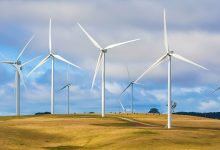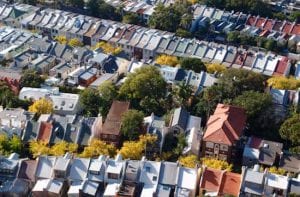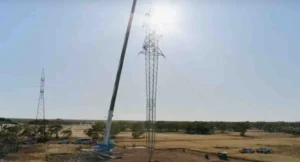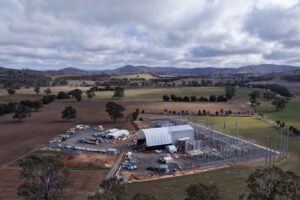Renewable energy developer CWP Renewables has announced the start of construction of the 244MW Bango Wind Farm, to be built 30km north of Yass in the Southern Highlands region of NSW.
The project will be the third project CWP Renewables has undertaken in NSW in partnership with global investment management firm Partners Group, following the completion of the 270MW Sapphire Wind Farm and the 135MW Crudine Ridge wind farm projects.
The 244MW wind farm will also rank as the third biggest in NSW, and expects to generate more than 740,000MWh of electricity annually, equivalent to the power needs of around 100,000 homes. A new transmission network connection will be completed for the project.
The project will consist of 46 turbines with a rated capacity of 5.3MW. The project will be the first globally to utilise the GE Cypress 5.3MW turbines, which rank amongst the largest onshore wind turbines currently in production.
“With 1 GW of installed wind capacity and another 600 MW under construction here, GE remains deeply committed to Australia’s energy future, and with the Cypress platform we’re ensuring that we are bringing the very latest technology to this market,” GE’s Steve Oswald said.
“”This new platform will help lower the cost of energy for Australian households and businesses and will create a significant number of regional jobs throughout the construction phase.”
The turbines will have a hub height of 121 metres, and a blade length of 79 metres, meaning the maximum height of the turbines will reach 200 metres.
It is estimated that up to 120 jobs will be created during the construction phase, with many services drawn from the Southern Tablelands region.
“Projects like Bango and the others in the portfolio will help with the transition away from fossil fuelled electricity in the State”, CWP Renewables CEO, Jason Willoughby said.
“Significantly, our portfolio combines the benefits of wind and solar generation with large scale batteries, allowing morning and evening wind generation to be combined with daytime solar generation and battery energy storage.
“This is the future of large‐scale generation in Australia. We can, from this large diversified portfolio, produce low cost, low emissions, reliable power”.
The project will grow CWP’s NSW wind portfolio to 640MW, which has been developed alongside investment managers Partners Group and through the firm’s Grassroots Renewable Energy platform. Partners Group is targeting a total investment in Australian wind energy projects of $700 million and aims to grow its portfolio to more than 1,300MW in generation capacity.
Partners Group operating partner Benjamin Haan welcomed the commencement of the project, saying that despite some of the challenges currently being faced by project developers, there remains a strong business case for investment in renewable energy projects in NSW, and Australia more generally.
“Despite ongoing market challenges related to grid congestion and uncertainty in future green energy policy, there remains a compelling market opportunity for experienced developers and investors in renewable energy in Australia, particularly in New South Wales. We are pleased to continue to work with the CWP team to support the generation of clean energy in Australia,” Haan said.
The project has secured a 15-year offtake agreement with Snowy Hydro, which has agreed to purchase electricity from 100MW of the wind farm’s capacity as part of its tender that secured more than 880MW of wind and solar capacity that smashed the benchmarks prices for the technology and which will deliver “firmed” renewable output at below “base-load” prices.
The remaining generation from the Bango wind farm will be sold into the National Energy Market.
“As an offtaker for the energy, we look forward to Bango coming online,” Snowy Hydro CEO Paul Broad said in a statement.
“The energy will form part of the company’s fully‐ integrated energy portfolio. Snowy Hydro’s on‐demand hydro, gas and diesel generation can ‘firm up’ intermittent wind and solar to create a reliable and affordable source of energy for consumers.”
“Significantly, our portfolio combines the benefits of wind and solar generation with large scale batteries, allowing morning and evening wind generation to be combined with daytime solar generation and battery energy storage. T
“This is the future of large‐scale generation in Australia. We can, from this large diversified portfolio, produce low cost, low emissions, reliable power”.
The project has received debt financing from a consortium of Australian and international banks, including the Commonwealth Bank, Westpac, Japan’s Sumitomo Mitsui Banking Corp and the Oversea-Chinese Banking Corporation.
The Commonwealth Bank has previously partnered with CWP Renewables, having secured a power purchase agreement for electricity produced from the company’s Sapphire Wind Farm as part of the bank’s commitments to the RE100 initiative. CWP aims to complement the Sapphire wind farm through a co-located 200MW hybrid solar and battery power facility at the same location.
The NSW Southern Tablelands has been a hotspot of wind project development, despite the objections of energy minister Angus Taylor, whose electorate covers part of the area, and is already host to around 500MW of wind generation capacity across more than half a dozen projects.
The latest edition of the National Energy Emissions Update from The Australia Institute highlighted that the strong growth in renewable energy could see New South Wales become the leading state of renewable energy generation, despite being the only Australian state without a dedicated target for renewable energy generation.
CWP is also leading the huge Asia Renewable Energy Hub consortium in the Pilbara region of W.A. which is looking at building 15GW of wind and solar capacity to support local industry, and to export to Asia either as “green hydrogen” or possibly through a sub-sea cable.








